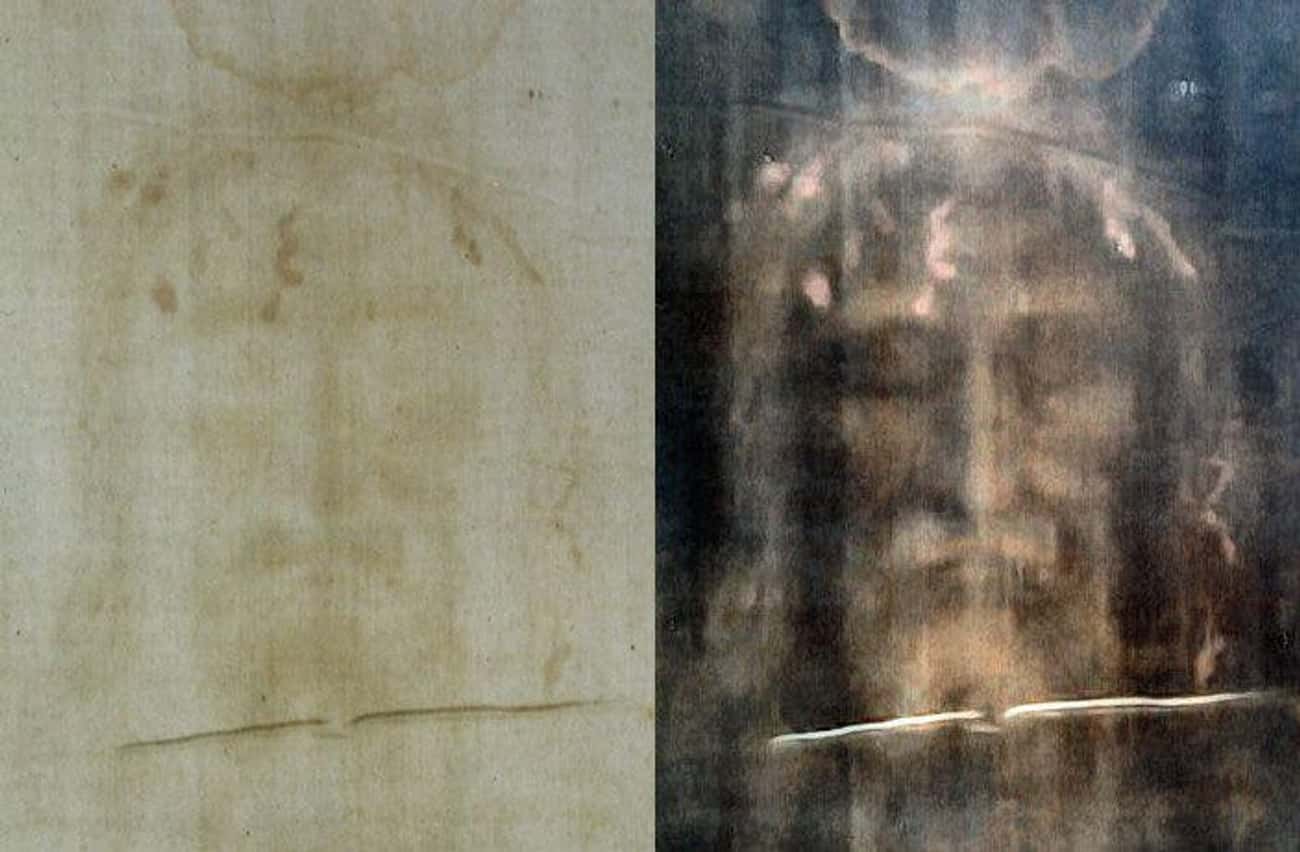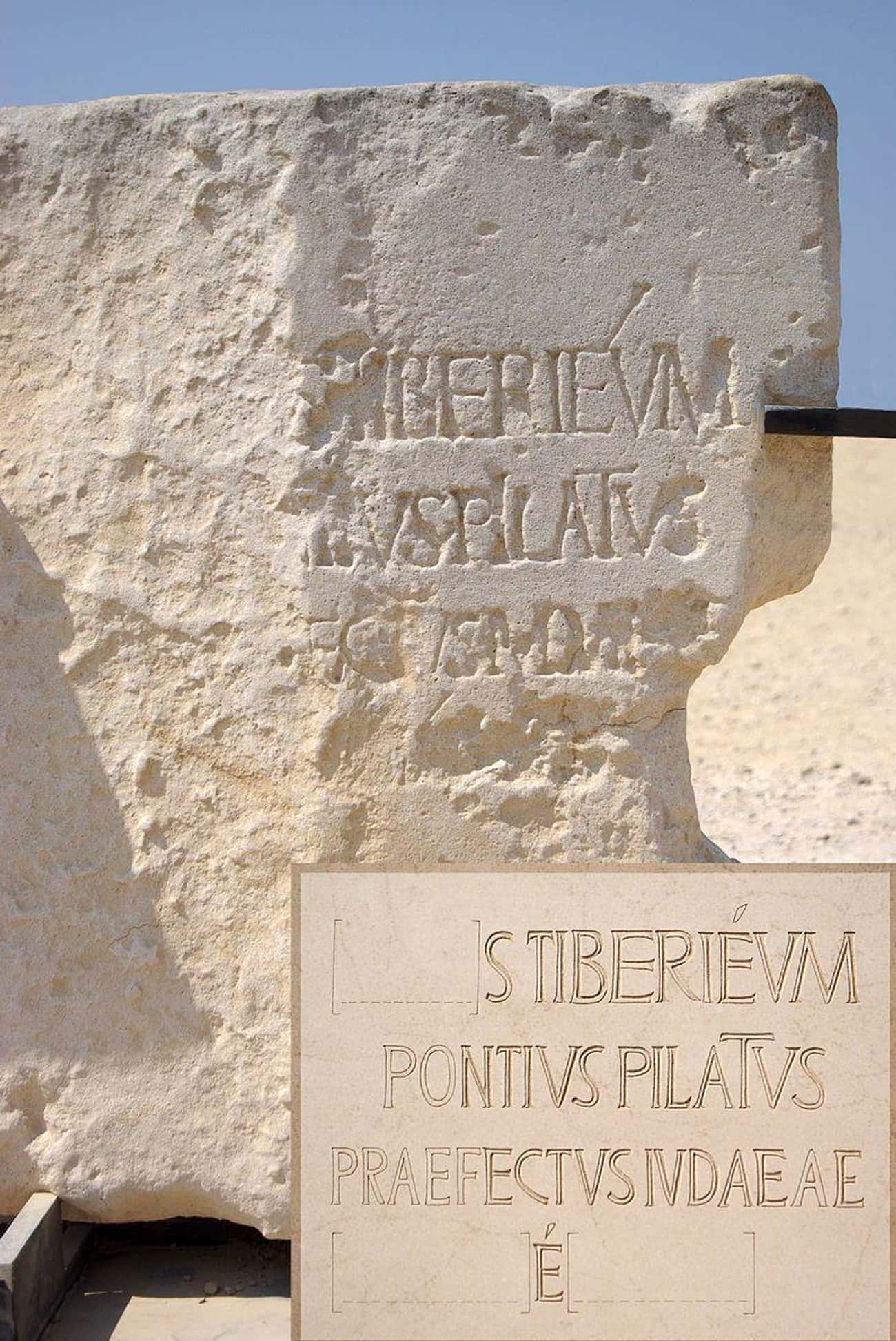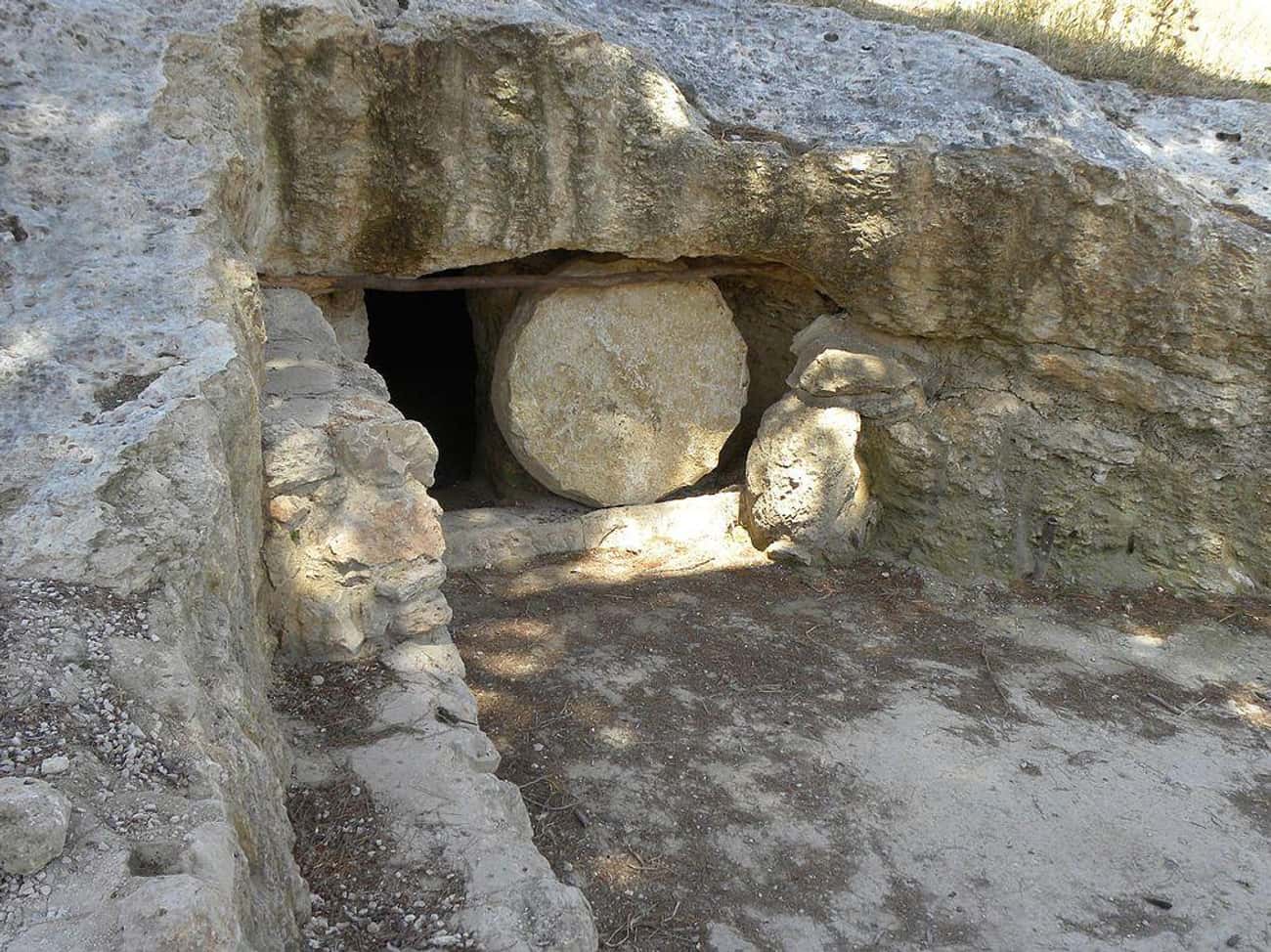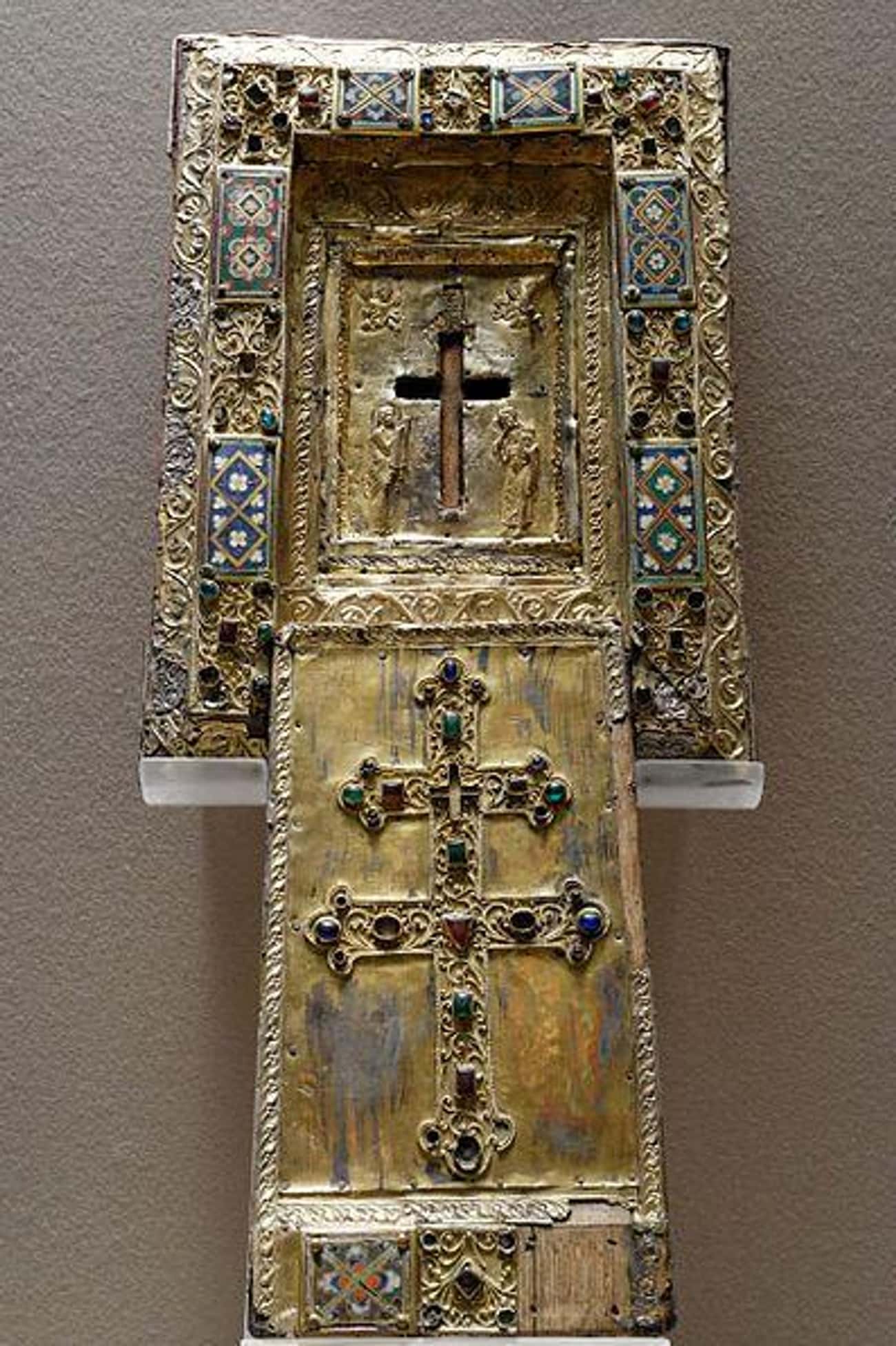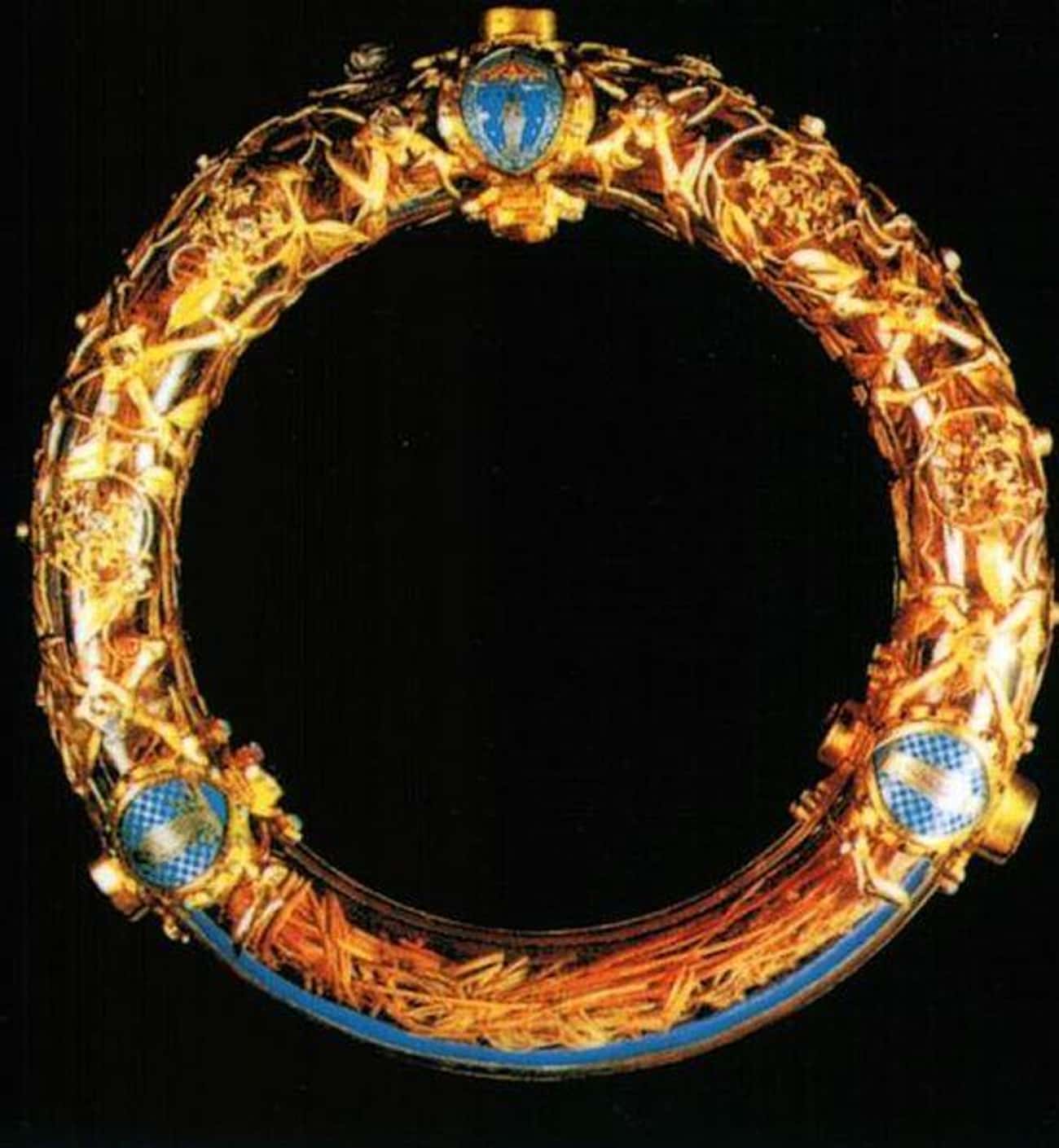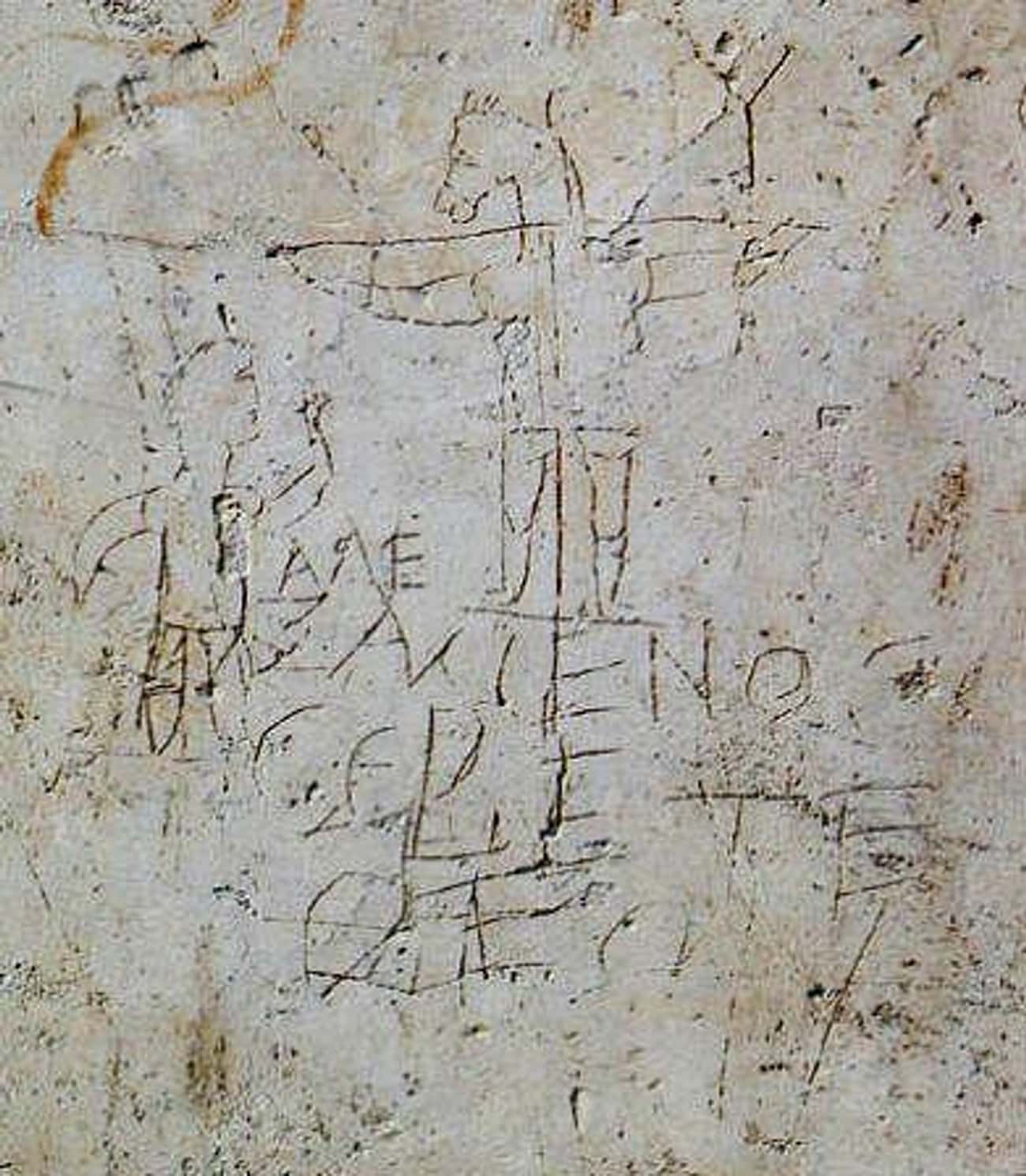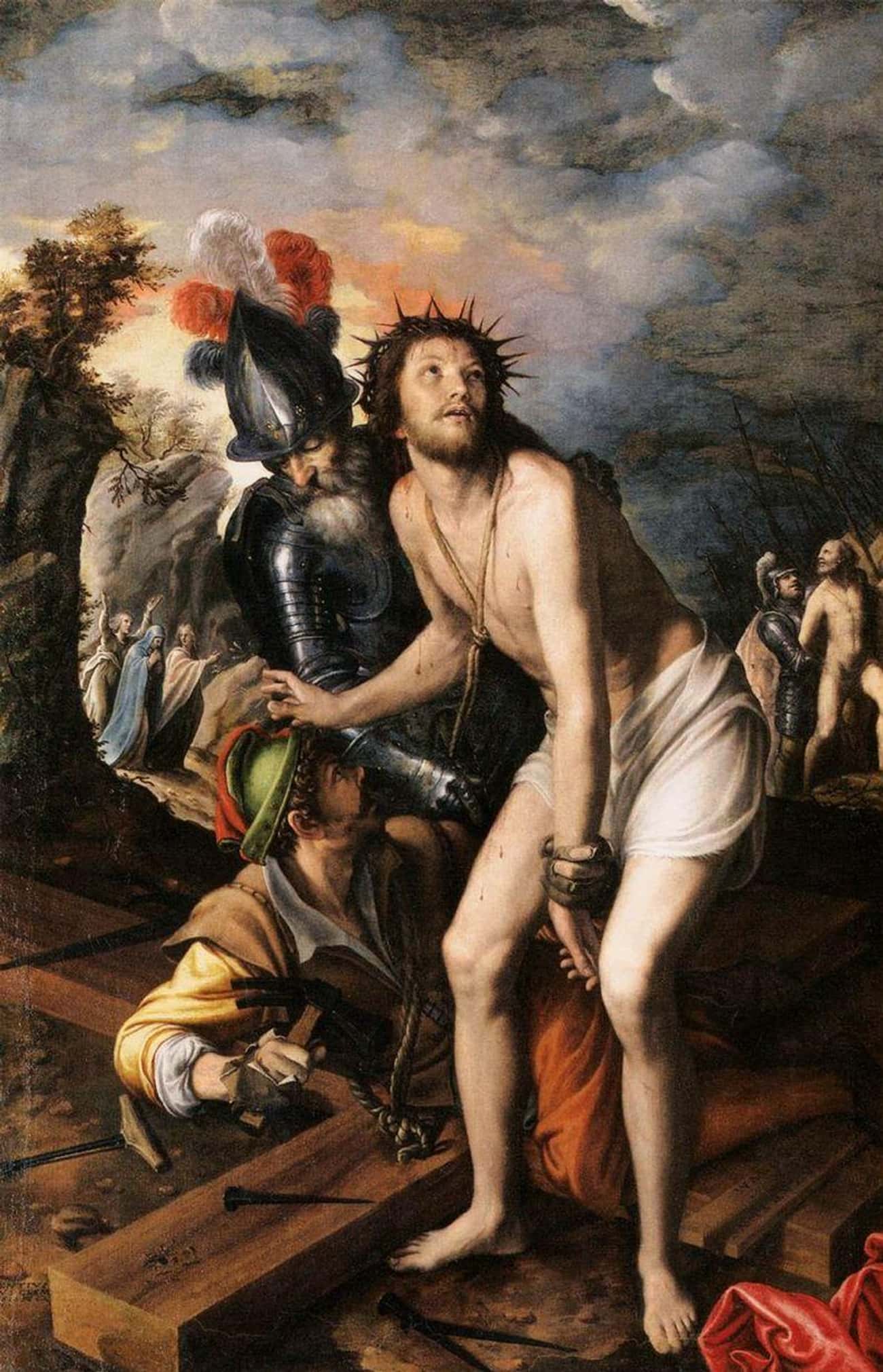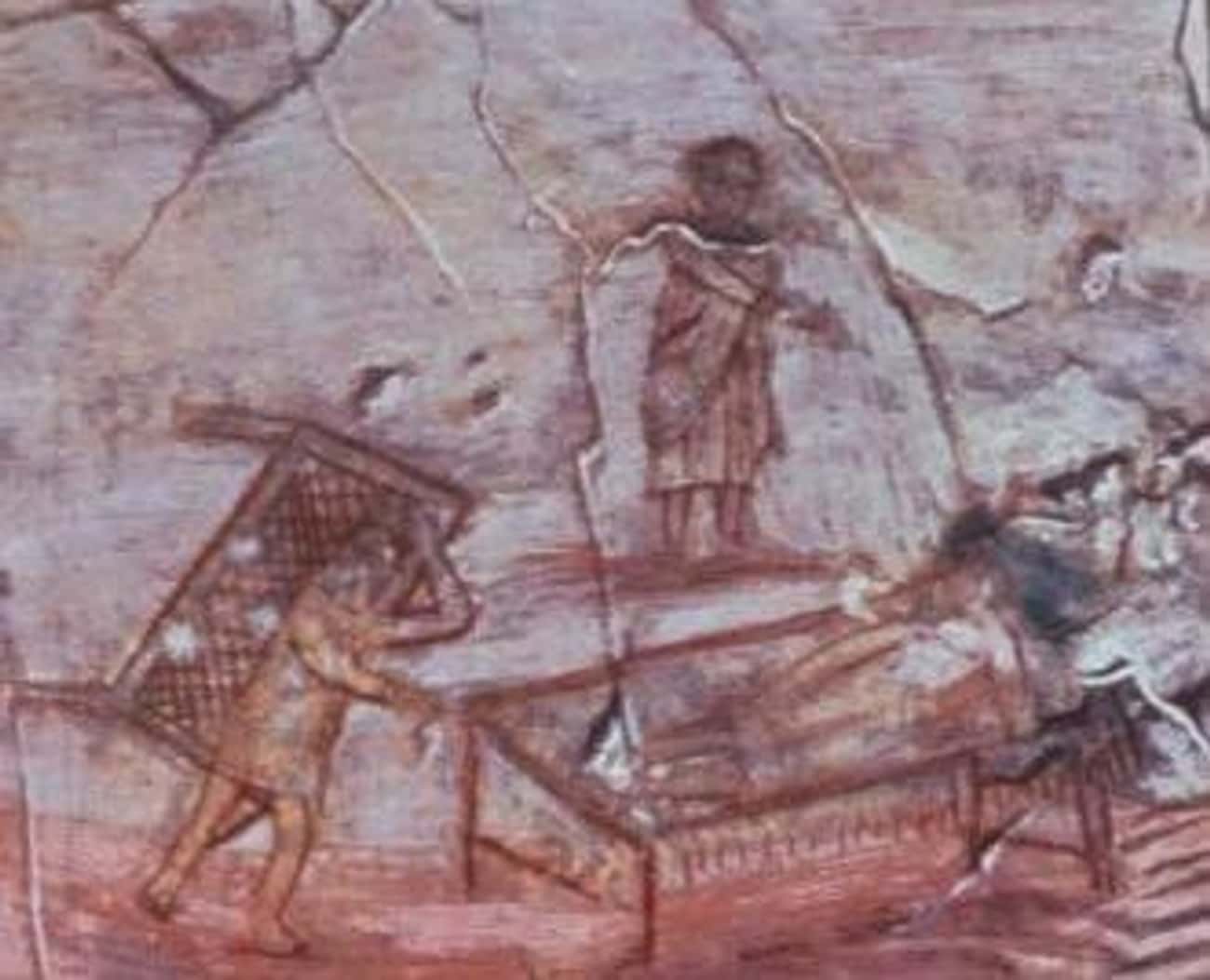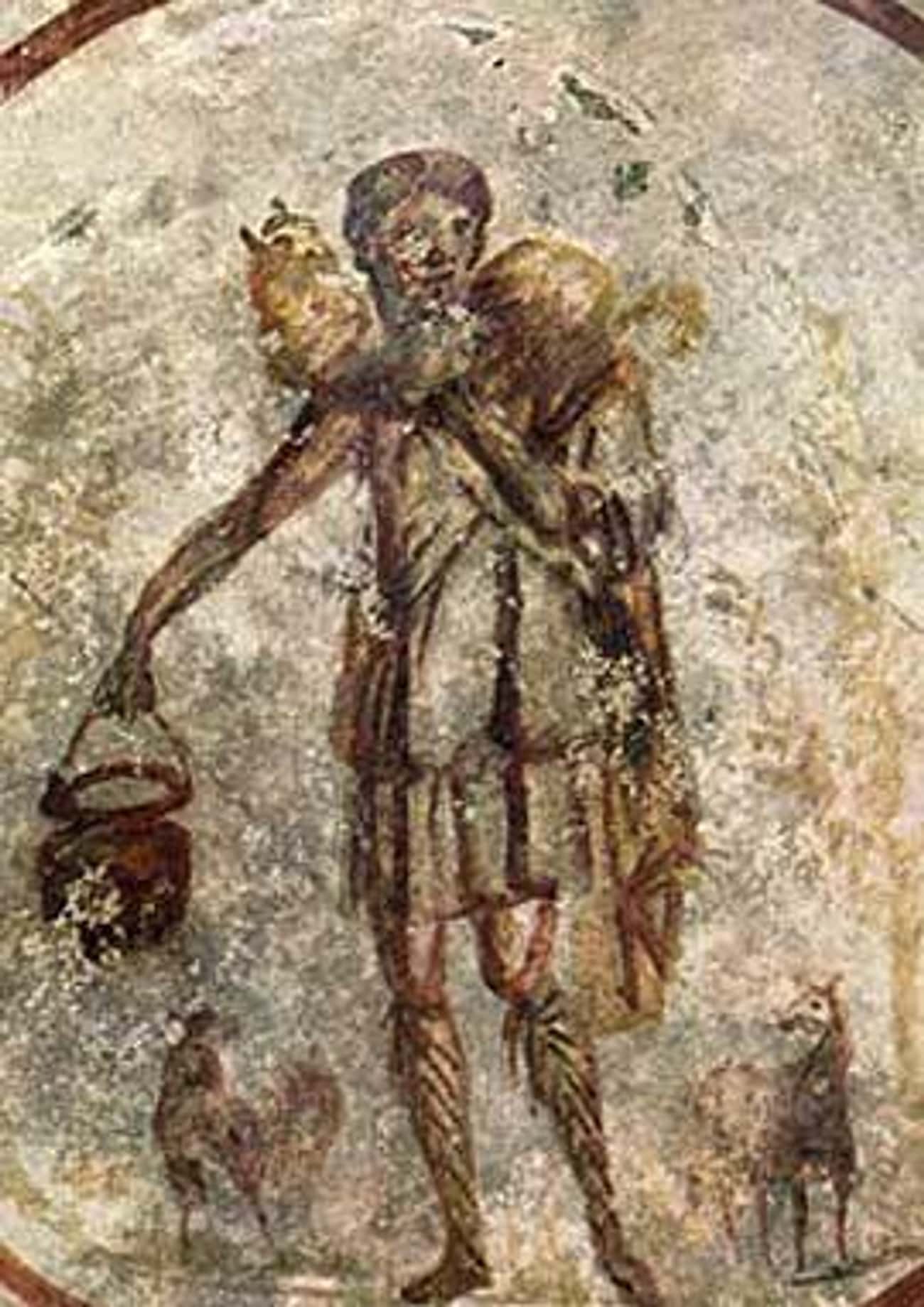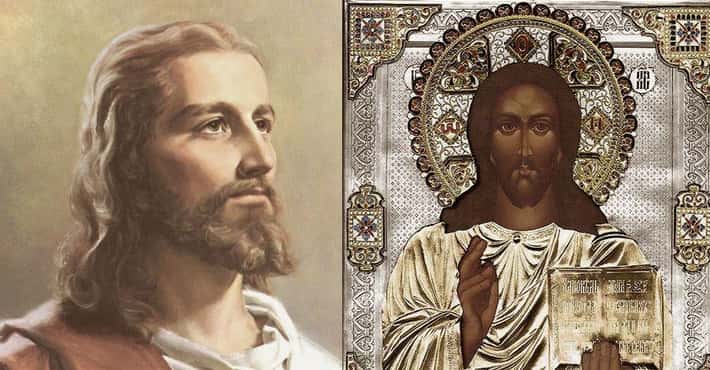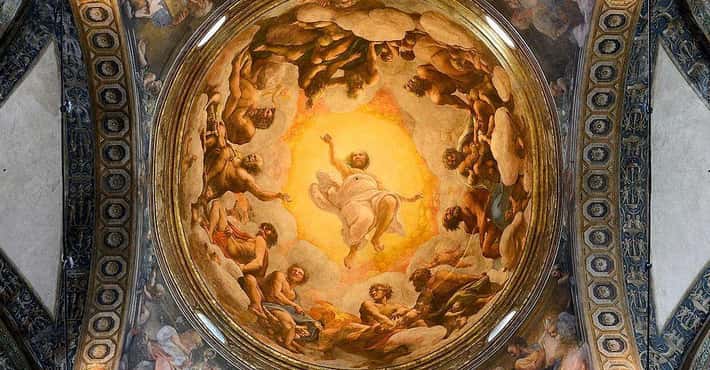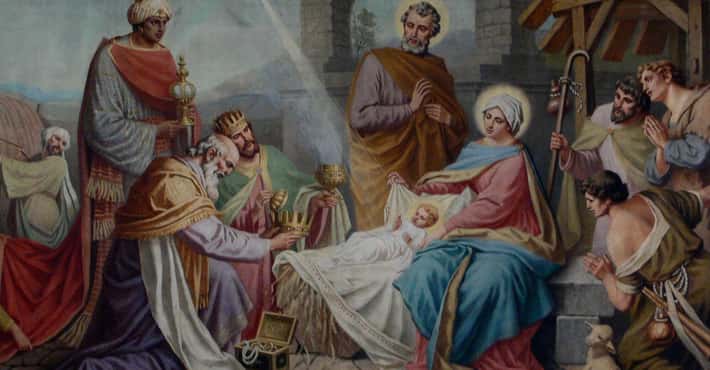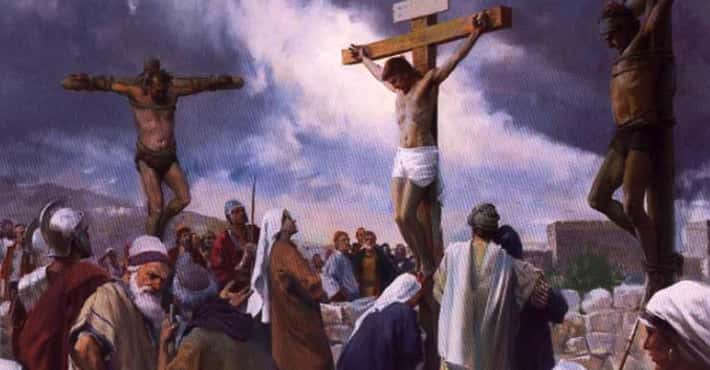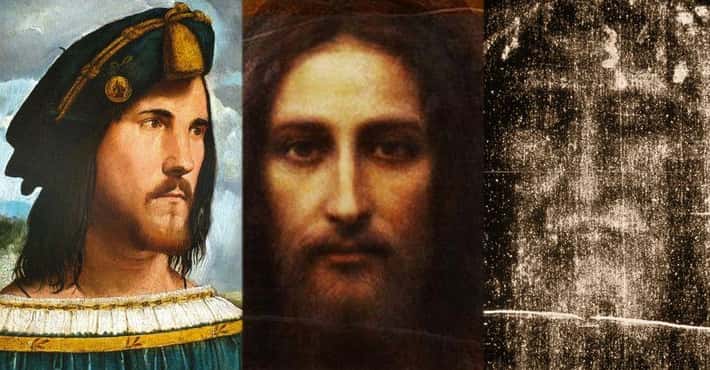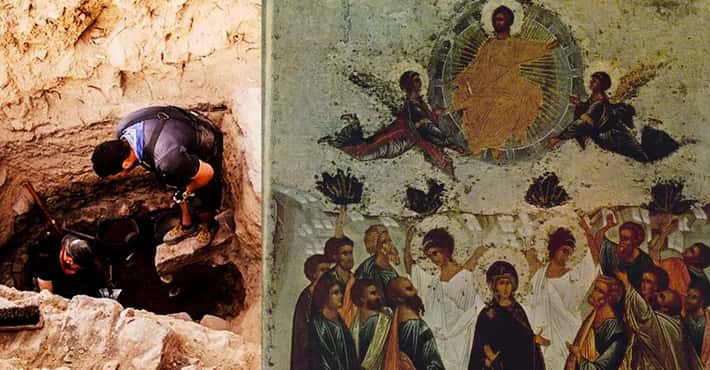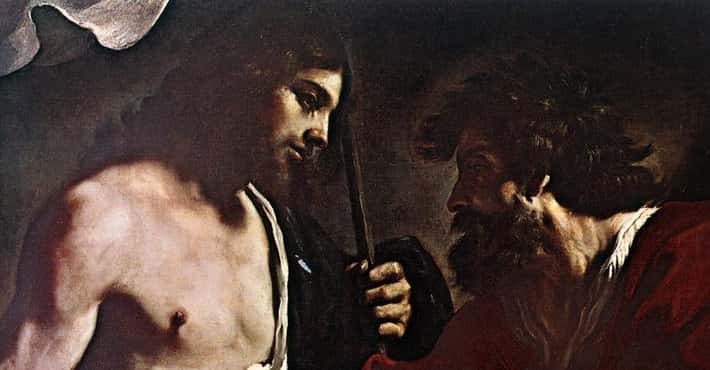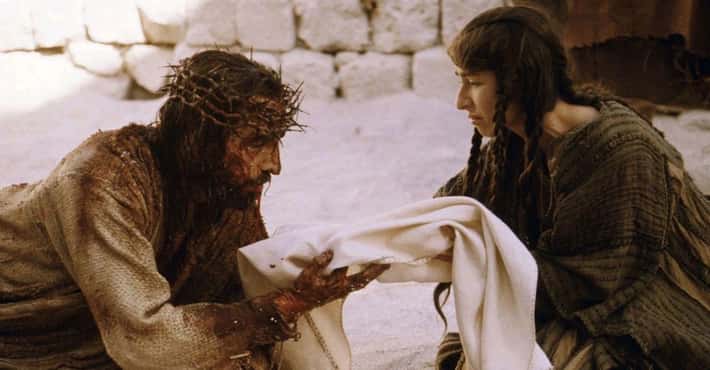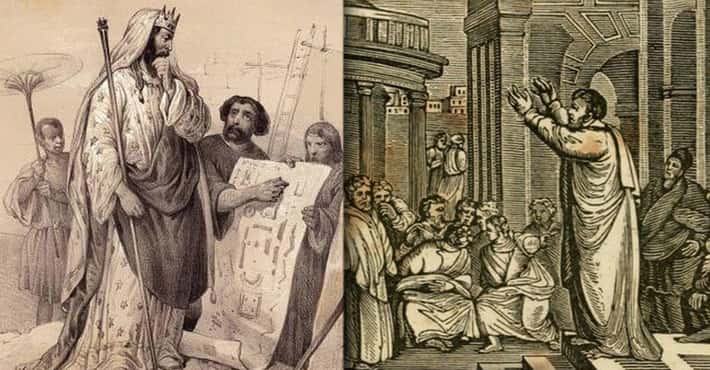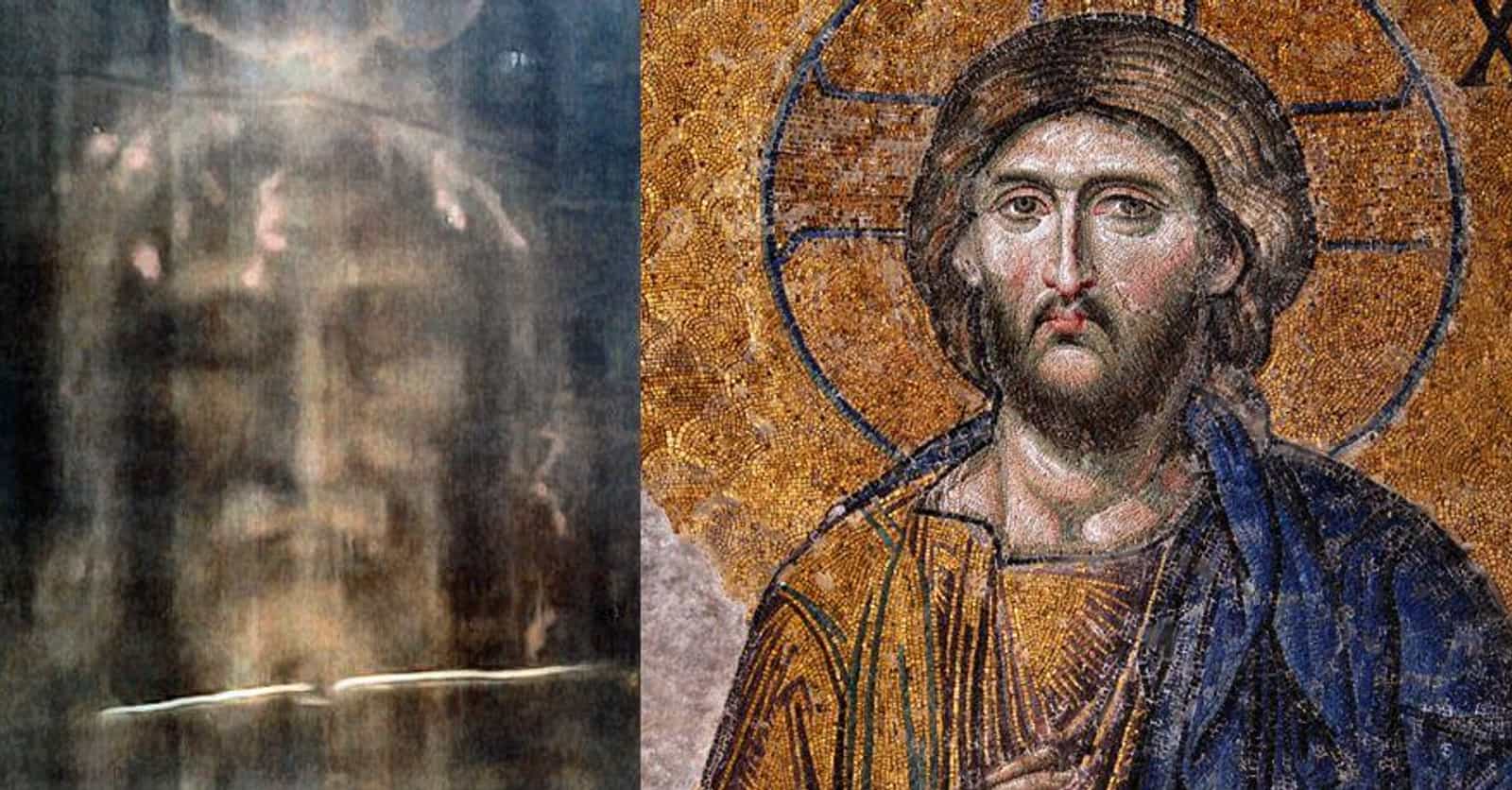
Here Is All The Physical Evidence That Jesus Christ Was A Real Person
- Photo: Dianelos Georgoudis / Wikimedia Commons / CC-BY-SA-3.0
The Shroud Of Turin May Have Been Used To Wrap Jesus' Crucified Body
When it comes to physical evidence of Jesus, the most famous might be the Shroud of Turin. The 14-foot long cloth shows clear evidence of being used as a burial wrap, used by someone with a number of bloody wounds. The shroud first appeared in the 1300s, and since that time scholars have debated whether it is a forgery.
The mystery surrounding the Shroud of Turin only deepened when it was first photographed, revealing a detailed image of a bearded man when viewed in the reverse negative. A research project concluded in 1981 that the image was an actual human, and the blood on the shroud was real, not the product of an artist.
However, radiocarbon dating of the Shroud of Turin shows that the cloth dates to the fourteenth century, exactly when it was first identified. As a result, most scholars do not consider the Shroud of Turn reliable evidence of the existence of Jesus.
- Video: YouTube

These Nails May Have Been Used To Crucify Jesus
The April 2011 discovery of two nails, possibly used for a crucifixion, may provide physical proof that Jesus not only lived, but died at the hands of the Romans. The two nails were discovered in a 2,000-year-old tomb in Jerusalem, and there is some evidence that they were linked to the crucifixion of Jesus.
However, the majority of experts and scholars doubt the nails can be tied to Jesus. In 1911, scholar Herbert Thurston proved that there were at least 30 "holy nails" being venerated across Europe, when the true number was likely three or four. As a result, the nails are only circumstantial evidence.
- Photo: Berthold Werner / Wikimedia Commons / CC-BY-SA-3.0
The Pilate Stone Proves That Pontius Pilate Was Real
Before 1961, there was no physical evidence that Pontius Pilate, the governor of Judea who ordered the crucifixion of Jesus, was real. He was mentioned in multiple texts, but his administrative records, letters to Rome, and even his aqueduct, did not survive... until the discovery of the so-called Pilate stone.
The Pilate stone was excavated at Caesarea Maritima, a seaport built by Herod the Great. The stone bears the name of Pontius Pilate, making it the only archaeological evidence that Pilate existed. The inscription reads, “Pontius Pilate, prefect of Judaea, has made this Tiberieum and dedicated it to the Augustan gods.” The Pilate stone helps establish the existence of an important person mentioned in the Gospels, making it more likely that Jesus was a real person.
- Photo: Ian Scott / Wikimedia Commons / CC-BY-SA-2.0
Archaeological Evidence Shows That Nazareth Existed In The Time Of Jesus
Today, the city of Nazareth is a real place in Israel. But did Nazareth actually exist in the era of Jesus? Some authors have argued that the entire city was a Christian invention. However, in 2009 the Israeli Antiquities Authority uncovered archaeological proof that Nazareth did exist in the first century CE.
Archaeologists uncovered remains of houses that dated back to the time of Jesus. The houses were small, private dwellings, and no public buildings have been identified. The researchers have found evidence of vineyards, terrace farming, stonemasonry, and olive presses. The physical evidence has ended debates over whether Nazareth existed - but they cannot prove that Jesus was real. As for the stone rolled in front of a tomb in Nazareth, that is a modern addition.
- Photo: Unknown / Wikimedia Commons / Public Domain
Churches Claim To Have Pieces Of Jesus's Crucifixion Cross
Jesus was crucified on an enormous cross, according to the Gospels, and many have wondered if the cross still exists. In the medieval period, many churches, nobles, and royals claimed to possess a piece of the true cross, with pieces preserved in elaborate reliquaries. As the humanist Erasmus quipped in the sixteenth century, “So they say of the cross of Our Lord, which is shown publicly and privately in so many places, that, if all the fragments were collected together, they would appear to form a fair cargo for a merchant ship.”
Reports of the true cross started to spread in the fourth century, when one Christian reported that pieces of the cross were venerated in Jerusalem on Good Friday with deacons stationed nearby to make sure people didn't bite off a piece to take home. But crucifixion was considered a shameful death when Jesus died, and it appears unlikely that his earliest followers would have preserved the cross. As a result, it is not possible to prove that pieces of the cross are authentic.
- Photo: Gavigan / Wikimedia Commons / CC-BY-SA-3.0
Notre Dame Has A Crown of Thorns, But Is It Real?
Before Jesus was crucified, a crown of thorns was placed on his head. As described by John 19:2, "the soldiers twisted together a crown of thorns and put it on His head," mockingly calling Jesus King of the Jews. For centuries, Christians have believed that pieces of the crown still exist today, providing physical proof of the crucifixion.
The oldest and most venerated crown of thorns is at Notre Dame Cathedral in Paris. It can be dated back to the fourth century, and the French king acquired it in the thirteenth century. Before it reached France, the crown was kept in Jerusalem and Constantinople.
However, while it has a long history, there is no physical proof that the crown of thorns at Notre Dame was worn by Jesus.
- Photo: Unknown / Wikimedia Commons / Public Domain
Graffiti Could Be Strong Evidence Of Jesus's Existence
While early Christians had an incentive to produce texts and images that glorified Jesus, people who didn't follow Christ did not have the same motives. Thus, the most reliable evidence of Jesus might come from non-Christians who lived in the same time. One of the oldest images of Jesus comes from a piece of graffiti. It is called the Alexamenos Graffito, and it likely dates to around 200 CE.
The image shows a crucified man with the head of a donkey. It was found in Rome, but carries a Greek inscription that reads "Alexamenos worships God." The mocking image argues that Jesus was not actually God, but rather a foolish character, underscored by the donkey head.
However, the piece of graffiti still does not prove that Jesus was real. The best textual evidence may come from another non-Christian, the first-century scholar Flavius Josephus.
- Photo: Unknown / Wikimedia Commons / Public Domain
A Jewish Scholar Wrote About Jesus Only Decades After His Death
In 93 CE, only a handful of decades after the death of Jesus, a Jewish scholar and historian named Flavius Josephus mentioned Jesus twice. Josephus was born in Jerusalem in the 30s CE, the same decade Jesus was crucified. He wrote a series of histories of his era. In one of them, called the Antiquities, Josephus names Jesus as the "so-called Christ."
In a controversial passage, Josephus writes,
Now there was about this time Jesus, a wise man, if it be lawful to call him a man, for he was a doer of wonderful works, a teacher of such men as receive the truth with pleasure. He drew over to him both many of the Jews, and many of the Gentiles. He was the Christ, and when Pilate, at the suggestion of the principal men among us, had condemned him to the cross, those that loved him at the first did not forsake him; for he appeared to them alive again the third day; as the divine prophets had foretold these and ten thousand other wonderful things concerning him. And the tribe of Christians so named from him are not extinct at this day.
The passage is controversial because many scholars believe it was corrupted by later Christian scribes who made Josephus's words more positive.
- Photo: Vincenzo Campi / Wikimedia Commons / Public Domain
Josephus Still Provides Independent Confirmation Of The Existence Of Jesus
However, even if the more positive references to Jesus as a "wise man" and the Christ were added by later scholars, Josephus's historical account confirms many details about the life of Jesus. As scholar Christopher Price has argued, the passage in Josephus's Antiquities independently confirms the existence of Jesus. It describes him as a teacher and says that he was executed by Pontius Pilate. And it calls Jesus the founder of Christianity.
As another scholar, E.P. Sanders, wrote, "[b]y the standards of the day, [Josephus] was a very good historian, and for some parts of his historical narratives he had excellent sources." And, most importantly, as a non-Christian, Josephus had no stake in propping up a mythical Christ; this means that his historical details are more likely to be reliable.
- Photo: Unknown / Wikimedia Commons / Public Domain
The Earliest Images Of Jesus Were Created 200 Years After His Death
If Jesus was real, he must have left behind some physical evidence. Because images of Jesus have been incredibly popular since the earliest years of Christianity, some scholars have looked for images of Jesus to prove that he was real.
But unfortunately, there are no known images of Jesus made before 200 CE, or nearly two centuries after Jesus lived. The mural pictured above, which dates to around 230 CE, shows the Gospel story of Jesus healing a paralyzed man. In the mural, discovered on the wall of a Syrian church, Jesus commands the paralyzed man to walk, which, miraculously, he does.
The image is barely identifiable today, and provides no physical proof that Jesus actually existed.
- Photo: Library of Congress / Wikimedia Commons / Public Domain
The Dead Sea Scrolls Point To Jesus's Existence
Other textual evidence, such as the Dead Sea Scrolls, may point to the existence of Jesus. The scrolls, a vast number of documents found in Israel in the 1940s, date to some time between 150 BCE and 70 CE. The scrolls refer to a "teacher of righteousness," and mention the "Son of God," which could possibly refer to Jesus. At the very least, the scrolls "disclose the context of Jesus's life and message," according to scholar James Chalesworth at the Princeton Theological Seminary.
And as historian Bart Ehrman points out, a number of people who met the real Jesus wrote about him. And although it is not physical proof, Ehrman also notes that if someone wanted to invent a messiah, the story might be slightly more heroic.
"The Messiah was supposed to overthrow the enemies - and so if you're going to make up a messiah, you'd make up a powerful messiah... You wouldn't make up somebody who was humiliated, tortured and the killed by the enemies."
- Photo: Unknown / Wikimedia Commons / Public Domain
One Atheist Historian Argued There Is More Evidence For Jesus Than Many Other Historical Figures
Atheist historian Michael Grant concludes Jesus was real, arguing, "if we apply to the New Testament, as we should, the same sort of criteria as we should apply to other ancient writings containing historical material, we can no more reject Jesus's existence than we can reject the existence of a mass of pagan personages whose reality as historical figures is never questioned."
In spite of the circumstantial nature of some pieces of physical evidence, the wealth of evidence adds up to the same conclusion: Jesus was a real person.
- Photo: Toby Hudson / Wikimedia Commons / CC-BY-SA-3.0
Jesus May Not Have Been Divine, But He Was Real
Whether you believe that Jesus was divine or not, the evidence points to the fact that Jesus was a real person. Proof like the Pilate stone and written sources from Jewish and Roman authors establishes the existence of many people and places mentioned in the Gospels. While the followers of Jesus had an incentive to claim he was divine, their writings also come from people who met the real Jesus when he was alive.
In spite of the fact that some physical evidence, such as the Shroud of Turin, the crown of thorns, and the pieces of the cross, cannot be definitively linked to the time of Jesus, there is still overwhelming evidence that Jesus was a real person.
As scholar Simon Gathercole has claimed, there is "little reasonable doubt that Jesus lived and died. The more interesting question - which goes beyond history and objective fact - is whether Jesus died and lived." And as for that question, it is doubtful that physical evidence alone could provide a definitive answer.


